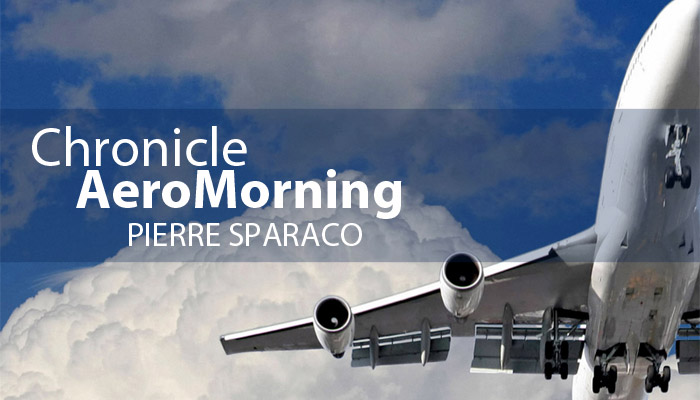If international air shows were organised purely for the media’s behalf, they would probably be better off renting a few hundred square metres in the city centre. We would all save time, money and energy. But fortunately there is a life outside Airbus, Boeing and their myriad of partners, subcontractors and suppliers.
With this proviso guaranteeing a clear conscience all round, some lessons come to mind in the aftermath of the 2012 edition of Farnborough. Not terribly original maybe, but worth saying nonetheless.
The clash of the Airbus-Boeing titans once again delighted special envoys, not least the major news agencies. Their eyes firmly riveted on just two of the 1,500 exhibitors, they fired off dozens of dispatches, mostly built on sand although containing no factual error.
In 4 days, Boeing “sold” (one should say “announced the sale of”) 396 aircraft, 150 of which to United Airlines. In the course of the same short week, Airbus only “sold” 115 planes. Whence the simplistic conclusion that the American manufacturer has edged ahead to take the lead again. The reality is clearly more complex and in any case the final outcome, in 6 months, a year, two years, is no secret: the rivals will be at … 50/50, give or take a point or two. All of which exposes the utter futility and complacency of commentaries heard these past days.
If we take a closer look, we might note that the new, re-engined version of the 737, christened MAX, has registered 649 orders in all, as against 1,454 for Airbus. But potentially, the two rivals can still be said to be almost on an equal footing, since Boeing has around 1,200 commitments for MAXs. However, trigger happy agency correspondents tend to forget that several months elapse between the choice of an aircraft by an airline, final signature of the contract and payment of the deposit. A typical contract can fill a small bookcase.
Boeing is also said to use aggressive marketing techniques, an elegant way of suggesting that Seattle sales reps have a habit of slashing prices. Where is the proof of this? Nowhere to be seen! And why anyway should this be the case, especially in the case of single-aisle planes? Given the spectacular level of sales of the MAX and NEO, delivery dates are having to be put back and airlines invited to be patient. Airbus is at present probably not in a position to sell deliverable NEOs before the end of the decade, and the same will soon apply to the MAX. Not that this increases their challengers’ – or supposed challengers’ – chances of success, with Irkut MS 21 and Comac C919 still struggling to gain credibility. The Bombardier C.Series, a specific case that plays in another category, is more likely to succeed on the 130/150 seater sector, whatever naysayers might think.
“The” question that remains is whether there is the risk of a dangerous “bubble” emerging. In media jargon, this is known as an “evergreen”: a recurrent theme, endlessly rehashed, a bottomless pit of received thinking rolled out by obligatory experts with nothing better to do than announce fashionable standpoints or loose interpretations of the Financial Times and the Wall Street Journal. No more, no less.
So what have they been saying in the past days? That airlines and major leasing companies – a familiar refrain – are getting carried away by overoptimistic traffic growth forecasts and buying too many aircraft, presaging a wave of cancellations. At the same time, in Seattle, where emotional commentaries are never de rigueur and caution is the byword, it is given to understand that, on the contrary, the stakes must be upped. The A320 and 737 between them will soon be manufactured at a combined rate of 88 per month, but in order to meet the demand/delivery ratio, this would have to go up to 120/ month. Supporters of the bubble theory are therefore kindly invited to hold their tongues. Verdict in 2 or 3 years.
Pierre Sparaco – AeroMorning
(Translated by Lindsey Jones)
After Farnborough – Are Airbus and Boeing heading towards a dangerous “bubble”?









Be the first to comment on "After Farnborough – Are Airbus and Boeing heading towards a dangerous “bubble”?"